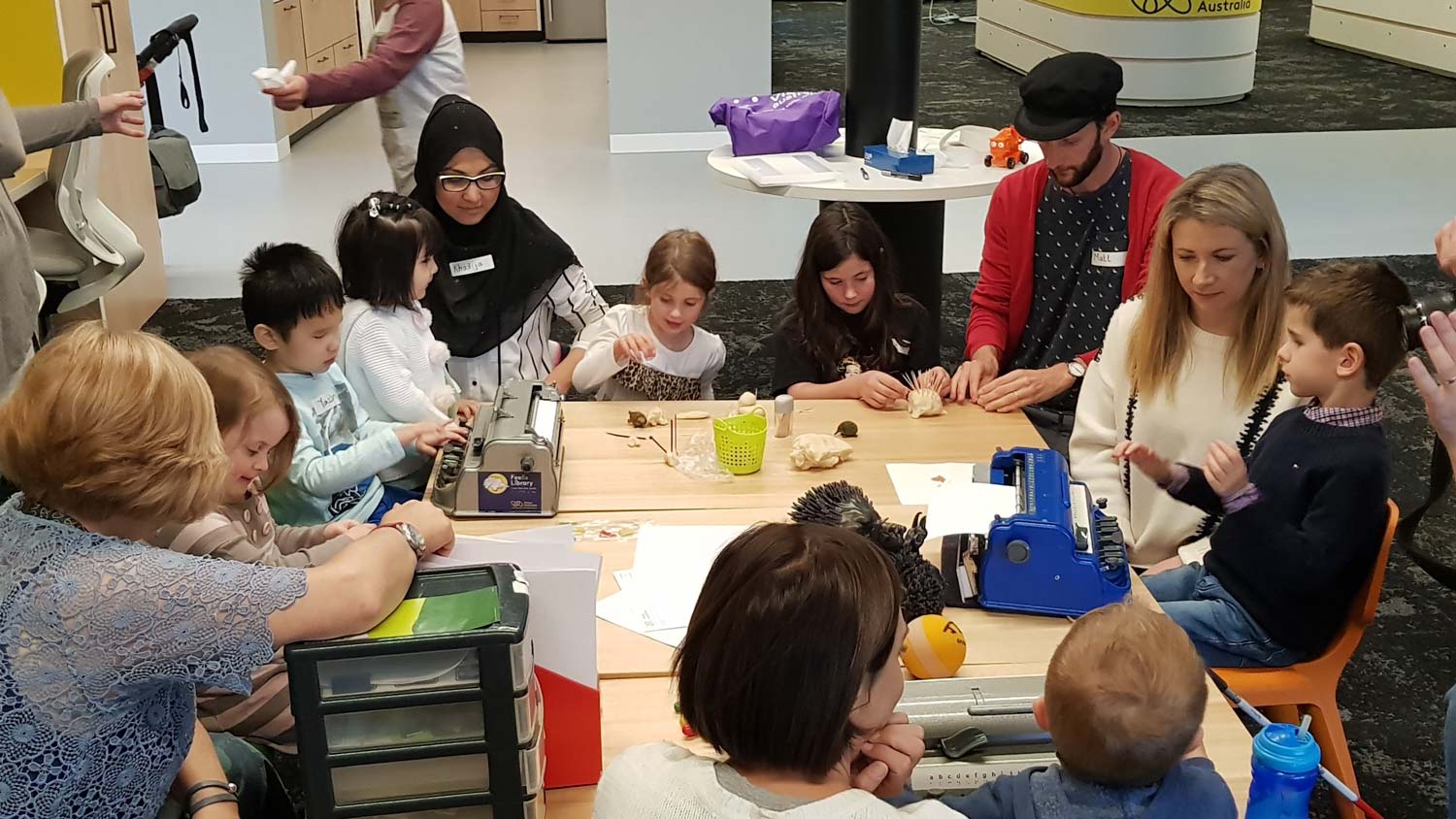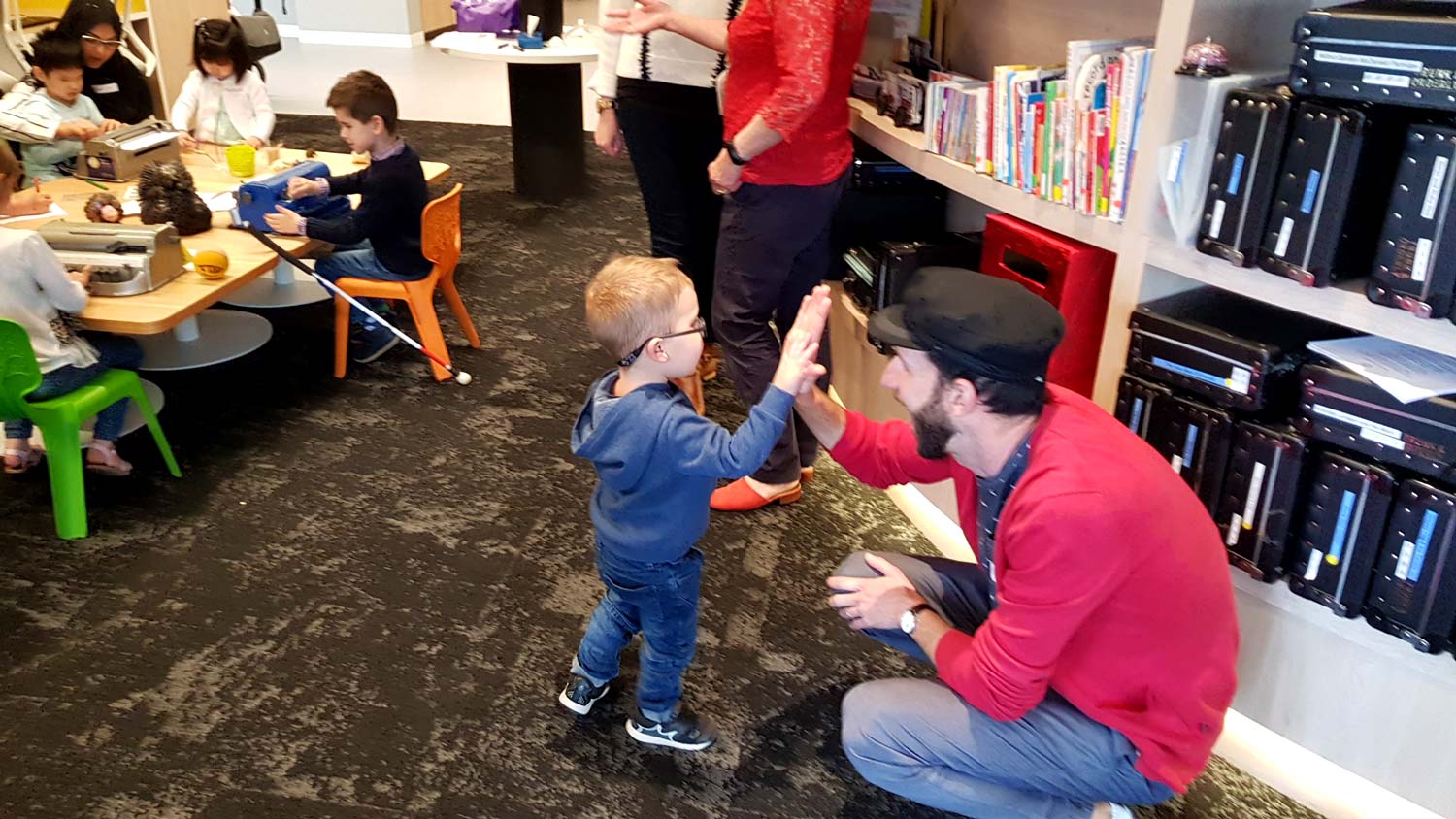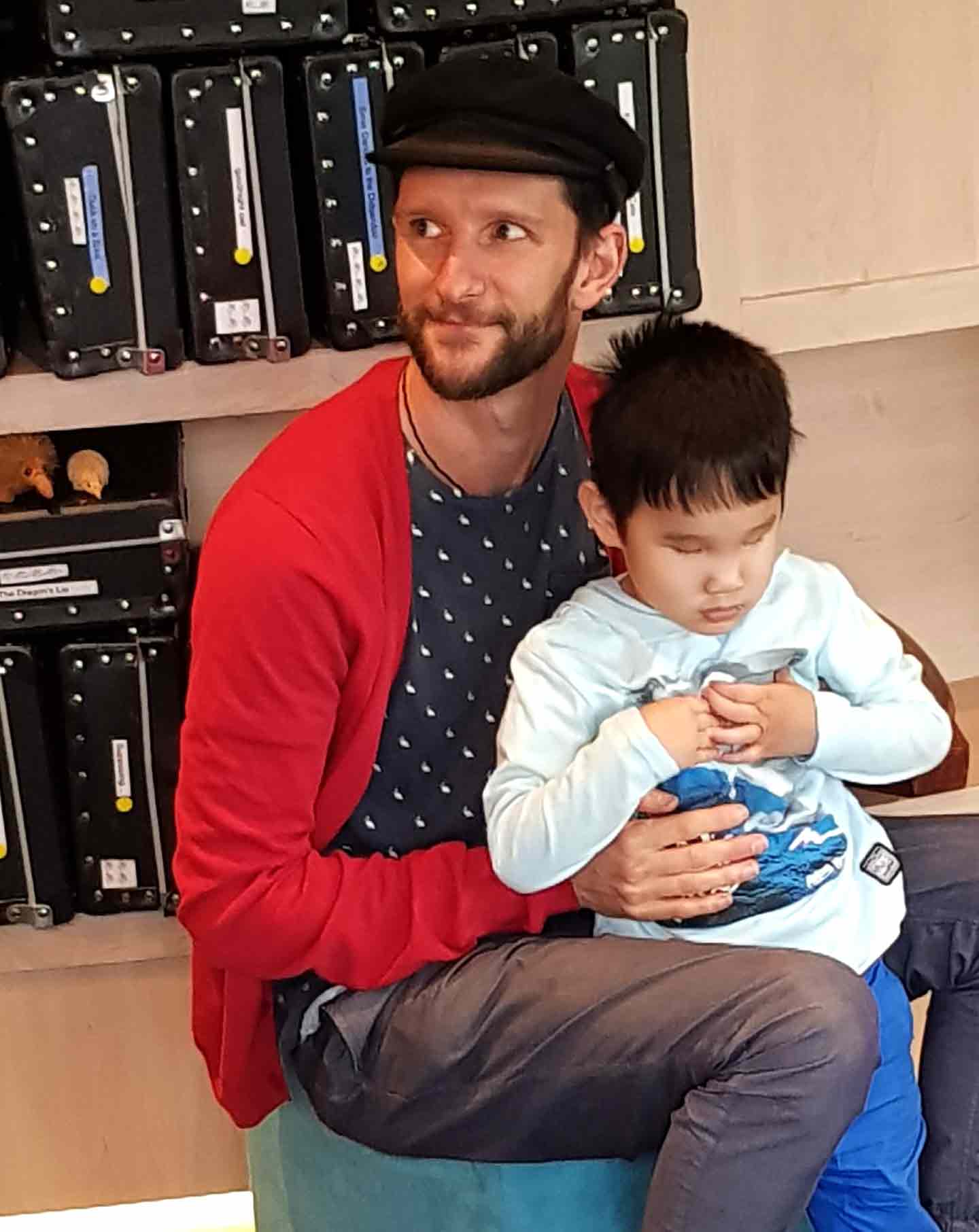Wow, do I take my vision for granted?
I’m writing this having just finished being part of a storytime by the incredible Feelix Library at Vision Australia. I was asked to read my book, Eric the Postie, to children with vision-impairment and then spend some time engaging in some fun, letter-related activities designed by the team at the Library.

There are certain experiences in life that challenge how you engage with the world so deeply that they leave a profoundly lasting impact on the way you view the world from then on. This one was one of those moments.
I take nothing, let me repeat, NOTHING, for granted more than my vision. And I suspect most of us with two working eyeballs are the same. It’s the one underlying assumption about human function that has shaped systems and processes that we use every single day.
How do you know which is the hot or cold tap if you can’t see it? How do you drive (or navigate public transport)? How do you know you’ve arrived at your friend’s house? Or the right workplace when you get into work in the morning? The weight by which we rely on our visual system is immense in everyday life, let alone some who makes picture books.

As a picture book maker, visual literacy is core to what I do. I spend hours on end studying how to improve it and push its boundaries. But how does a reader engage with a picture book when, well, they can’t see it?
Reading to kids who can’t see
I’ve never read to kids who can’t see. I’ve lived such a privileged, first-world life, that I don’t have any friends or relatives who suffer from vision deficiency to this degree. When I run workshops with sighted kids, I’m used to saying things like, “Can you see what this character is doing here?” Or “What do you think about this colour?” I engage them using vision-based language. It’s an auto-pilot thing that, in the context of a storytime with low-vision children, seems, well, offensive in some way.
I’ll admit it, as the kids started to arrive, I did my introvert thing and went into my shell. I had to learn how the adults who spend their lives around vision-impaired children engage with them. I’m not trained in this; I didn’t know what was ‘normal’ but I knew I couldn’t just point at something across the other side of the room to draw a child’s attention to it. I had to learn to see without using my eyes.
Engaging all the senses
At an intellectual level, it sounds easy. Well, you have four other senses, use those. But vision-based habits run deep, and it takes a lot of mental effort to prioritise the other senses. The good news is that once the penny drops, things become more comfortable and, well, somewhat magical.
Sounds come first
Sound is our obvious fallback. We yell, talk, and whisper to each other all the time, even if we’re sighted. Objects make noises too, sounds that (as a sighted person) you’ve probably never thought much about. The kids loved the dongs and dings of dropping PVC pipe on the floor or ringing a bell — the sound of plastic animals slipping down plastic tunnels, the sound of braillers chinking and chunking their impressions and indentations on paper. Sound, when you’re seeking it out, is everywhere. In fact, overwhelmingly so. For us sighted folks, it’s incredible what we’re ignoring on a day-to-day basis because we prefer to listen to the story that our eyes are telling us.

Touch is powerful and important
For sighted people, Touch is a less intuitive way to communicate. Touch is such an intimate, vulnerable sense. Society tells us that we should generally avoid touching anyone else, let alone children. It’s reserved for exclusive relationships — loved ones in particular. As a male I can’t even sit next to an unaccompanied minor on an aeroplane such is the fear in society we have of touch.

But touch is a critical input for kids with vision impairment; more so for kids with no vision at all. I spent a good 20 minutes dancing with a child where physical contact was so crucial to their sense of enjoyment and fun. Vibrating, swaying, and spinning – they’re all such positive things. Feeling momentum, warmth and moisture on skin, the way the breeze picks up and drops locks of hair as the head moves back and forth to the sound of music; it lit these kids up, and for good reason, touch is simply powerful. As sighted humans, I bet we barely notice when it happens to us. I know I don’t.
Taste and Smell are intertwined
Any young child uses their mouth as a primary sensing organ to engage with the world, but they grow out of that quickly as vision takes priority and our parents make us aware of the dangers of putting the wrong thing to our lips. Our noses are one of the most direct lines we have for input into our brain. But again, in the absence of vision, taste and smell become imperative. Fruits and snacks after storytime are a sensory stimulant and, pairing that with sound, provides a starting point for conversations. Kids with impaired vision learn sweet, sour, savoury. As a sighted person, you can see a child eat a strawberry which can begin a conversation about how it feels, what it sounds like to squish it in your mouth, and what it smells like before you swallow.
It makes sense
In the end, the sensory world is rich and diverse. In some ways, for those of us with vision, our ability to see is holding us back from truly experiencing what it’s like to be human. We simply tune-out the other senses. And, we’ve built a world where we prioritise sight over anything, and now we’ve made it difficult and disadvantageous to have any other way of completing many of the rudimentary tasks we need to live a productive, fruitful life.

As humans, we owe it to ourselves to challenge each other when our underlying assumption of vision overrides our decisions. It’ll make a better, more inclusive world, and those of us lucky enough to have working eyeballs may even learn something along the way.
